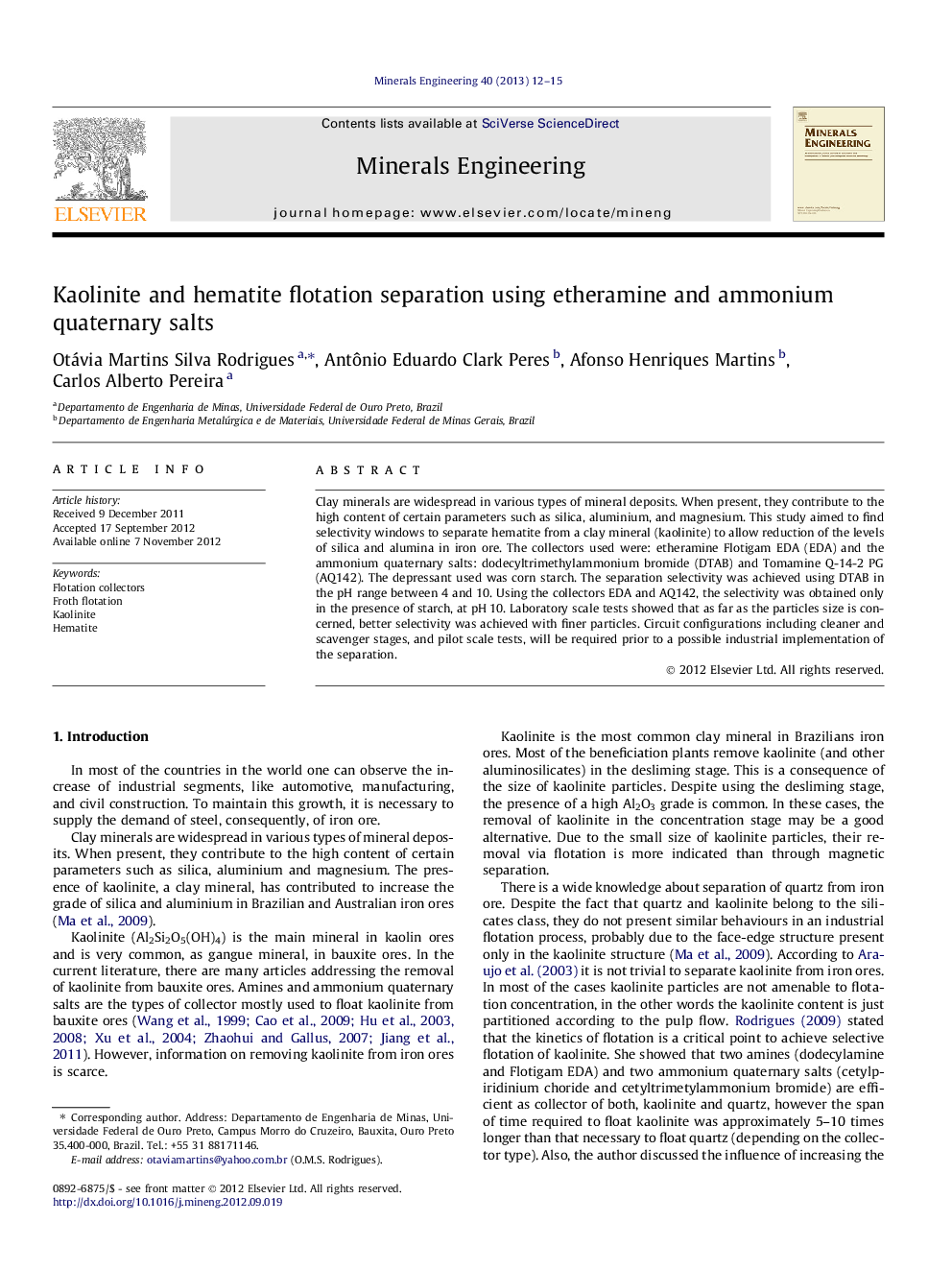| Article ID | Journal | Published Year | Pages | File Type |
|---|---|---|---|---|
| 233500 | Minerals Engineering | 2013 | 4 Pages |
Clay minerals are widespread in various types of mineral deposits. When present, they contribute to the high content of certain parameters such as silica, aluminium, and magnesium. This study aimed to find selectivity windows to separate hematite from a clay mineral (kaolinite) to allow reduction of the levels of silica and alumina in iron ore. The collectors used were: etheramine Flotigam EDA (EDA) and the ammonium quaternary salts: dodecyltrimethylammonium bromide (DTAB) and Tomamine Q-14-2 PG (AQ142). The depressant used was corn starch. The separation selectivity was achieved using DTAB in the pH range between 4 and 10. Using the collectors EDA and AQ142, the selectivity was obtained only in the presence of starch, at pH 10. Laboratory scale tests showed that as far as the particles size is concerned, better selectivity was achieved with finer particles. Circuit configurations including cleaner and scavenger stages, and pilot scale tests, will be required prior to a possible industrial implementation of the separation.
Graphical abstractFloatability of kaolinite and hematite, as a function of starch concentration, with EDA (1 × 10−4 mol/L) at pH = 10.Figure optionsDownload full-size imageDownload as PowerPoint slideHighlights► Amines and ammonium quaternary salts may be used in the flotation separation between kaolinite and hematite. ► The presence of corn starch enhances the separation selectivity. ► The ore particle size affects the laboratory scale flotation selectivity.
